 Technology peripherals
Technology peripherals AI
AI A new paradigm for text and image editing, a single model enables multi-text guided image editing
A new paradigm for text and image editing, a single model enables multi-text guided image editingBrief Overview of the Paper
#Research related to image editing using text is very hot, and many recent studies are based on denoising diffusion models to improve However, few scholars continue to pay attention to GAN-related research. This article is based on the classic StyleGAN and CLIP and proposes a semantic modulation module, so that only a single model is needed for different texts to perform text-image editing.
This article first uses the existing encoder to convert the image to be edited into the latent code w in the W^ semantic space of StyleGAN, and then uses the proposed semantic modulation module to encode the latent code Perform adaptive modulation. The semantic modulation module includes semantic alignment and semantic injection modules. It first aligns the semantics between the text encoding and the latent encoding of GAN through the attention mechanism, and then injects the text information into the aligned latent encoding to ensure that the Cain encoding owns the text. Information thereby achieving the ability to edit images using text.
Different from the classic StyleCLIP model, our model does not need to train a separate model for each text. One model can respond to multiple texts to effectively edit images, so we The model becomes FFCLIP-Free Form Text-Driven Image Manipulation. At the same time, our model has achieved very good results on the classic church, face and car data sets.

- ##Paper address: https://arxiv.org/pdf/2210.07883.pdf
- Github address: https://github.com/KumapowerLIU/FFCLIP
Recently, free text prompts describing user intent have been used to edit the StyleGAN latent space for image editing operations [1, 2]. Taking as input a sentence (e.g., ‘Blue’) or a phrase (e.g., ‘Man aged 10’), these methods edit the described image attributes accordingly by modulating the latent encoding in the StyleGAN latent space.
Precise text-image editing relies on an accurate latent mapping between StyleGAN’s visual semantic space and CLIP’s textual semantic space. For example, when the text prompt is "surprise", we first identify its related semantic subspace (i.e. "expression", because surprise belongs to the attribute of expression) in the visual semantic space. After finding the semantic subspace corresponding to the text, the text will tell us the direction in which the latent encoding changes, from the current expression to the surprise expression. Pioneering studies such as TediGAN [1] and StyleCLIP [2] empirically predefined which latent visual subspace corresponds to the target textual hint embedding (i.e., specific attribute selection in TediGAN and grouping mapping in StyleCLIP). This empirical recognition constrains that given a text prompt, they must train a corresponding editing model.
Different text cues require different models to modulate the latent codes in the latent visual subspace of StyleGAN. Although the global orientation method in StyleCLIP does not employ such a process, parameter adjustments and editing orientations are manually predefined. For this reason, we have reason to explore how to automatically find the implicit visual semantic subspace through explicit text, so that a single model can handle multiple texts.
In this paper, we propose FFCLIP-Free Form CLIP, which can automatically find the corresponding visual subspace for different texts. FFCLIP consists of several semantic modulation modules that take as input the latent encoding w^ and the text encoding e in the StyleGAN latent space W^.
The semantic modulation module consists of a semantic alignment module and a semantic injection module. The semantic alignment module takes the text encoding e as the query and the latent encoding w as the key and value. Then we calculate cross-attention in the position and channel dimensions respectively, resulting in two attention maps. Then we use linear transformation to transform the current visual space into the subspace corresponding to the text, where the linear transformation parameters (i.e., translation and scaling parameters) are calculated based on these two attention maps. Through this alignment, we can automatically find the corresponding visual subspace for each text. Finally, the semantic injection module [3] modifies the latent code in the subspace by following another linear transformation.
From an FFCLIP perspective, [1, 2] neutron space empirical selection is a special form of our linear transformation in the semantic alignment module. Their group selection operation is similar to the binary values of our scaling parameters to indicate the usage of each position dimension of w. On the other hand, we observe that the semantics of W^ space are still entangled, and empirical design cannot find an accurate mapping between the latent space of StyleGAN and the textual semantic space of CLIP. Instead, the scaling parameter in our semantic alignment module adaptively modifies the latent code w to map different textual cue embeddings. The alignment is then further improved via our translation parameters. We evaluate our method on benchmark datasets and compare FFCLIP with state-of-the-art methods. The results show that FFCLIP is able to generate more reasonable content while conveying user intent.
FFCLIP
Figure 1 shows our overall framework. FFCLIP first obtains the latent encoding of images and texts through the pre-trained GAN inversion encoder and text encoder. The latent encoding of the image is w in the previously mentioned StyleGAN visual semantic space W^, and the text encoding is e_t . Like StyleCLIP, we use the e4e GAN inversion encoder [4] and the text encoder in CLIP to obtain the corresponding latent encoding respectively. Then we use e_t and w as the input of the modulation module and output the offset Δw of w. Finally, add Δw to the original w and put it into the pre-trained StyleGAN to get the corresponding result.

##Figure 1: Overall framework diagram
Figure 2 below is our semantic modulation module. In the semantic alignment module (Semantic Alignment), we can clearly see that we set Δw to Key and Value and set e_t to Query to calculate two attention maps. The sizes of these two attention maps are 18×1 respectively. and 512×512. Then we use the 18×1 attention map as the scaling coefficient S in the linear transformation. Our process of calculating the attention map is as follows:

At the same time, we After multiplying the 512×512 attention map by Value, the translation coefficient T in the explicit transformation is obtained through the Pooling operation. Our process of calculating the attention map is as follows:

After we have the translation and scaling coefficients, we can find the phase for the current text e_t through linear transformation For the corresponding visual subspace, the calculation steps are as follows:

Midterm x_i is the output result of our i-th semantic modulation module. Since the size of Δw is 18×512, the attention maps of 18×1 and 512×512 are calculated in the two dimensions of position and channel of Δw respectively. This operation is similar to Dual Attention [5].

Figure 2: Semantic modulation module
We can obtain the visual subspace corresponding to the text through the above operations. Then we use a method similar to AdaIN to inject text information into this space to obtain the final result. We call this operation the semantic injection module (Semantic Injection). The implementation steps of the entire module are as follows:

In the end, a total of 4 semantic modulation modules were stacked in our FFCLIP, and finally the final offset Δw was obtained.
Experimental results

##Figure 3: Visual comparison chart
As shown in Figure 3, we made a visual comparison with StyleCLIP [1], TediGAN [2] and HairCLIP [3]: it can be seen that FFCLIP can better reflect the semantics of the text , and generate more realistic edited images. At the same time, the corresponding numerical comparison results are shown in the table below. Our method can achieve the best results in both objective and subjective values.

Table 1: Numerical comparison
At the same time, our method also shows very good robustness. FFCLIP has not seen word combinations during training but uses single words for training. However, in testing, it can perform image processing based on the semantics of word groups very well. Edit, the visual effect is shown in Figure 4.

##Figure 4: Phrase editing
For more experimental results and ablation experiments, please see the original text.Summary
In this paper we propose FFCLIP, a new method for efficient image editing that can target different texts but only requires a single model. The motivation of this article is that existing methods match the current text and the semantic subspace of GAN based on existing experience, so an editing model can only handle one text prompt. We improve latent mapping through alignment and injected semantic modulation. It facilitates one editing model to handle multiple text prompts. Experiments on multiple datasets demonstrate that our FFCLIP effectively produces semantically relevant and visually realistic results.The above is the detailed content of A new paradigm for text and image editing, a single model enables multi-text guided image editing. For more information, please follow other related articles on the PHP Chinese website!
 从VAE到扩散模型:一文解读以文生图新范式Apr 08, 2023 pm 08:41 PM
从VAE到扩散模型:一文解读以文生图新范式Apr 08, 2023 pm 08:41 PM1 前言在发布DALL·E的15个月后,OpenAI在今年春天带了续作DALL·E 2,以其更加惊艳的效果和丰富的可玩性迅速占领了各大AI社区的头条。近年来,随着生成对抗网络(GAN)、变分自编码器(VAE)、扩散模型(Diffusion models)的出现,深度学习已向世人展现其强大的图像生成能力;加上GPT-3、BERT等NLP模型的成功,人类正逐步打破文本和图像的信息界限。在DALL·E 2中,只需输入简单的文本(prompt),它就可以生成多张1024*1024的高清图像。这些图像甚至
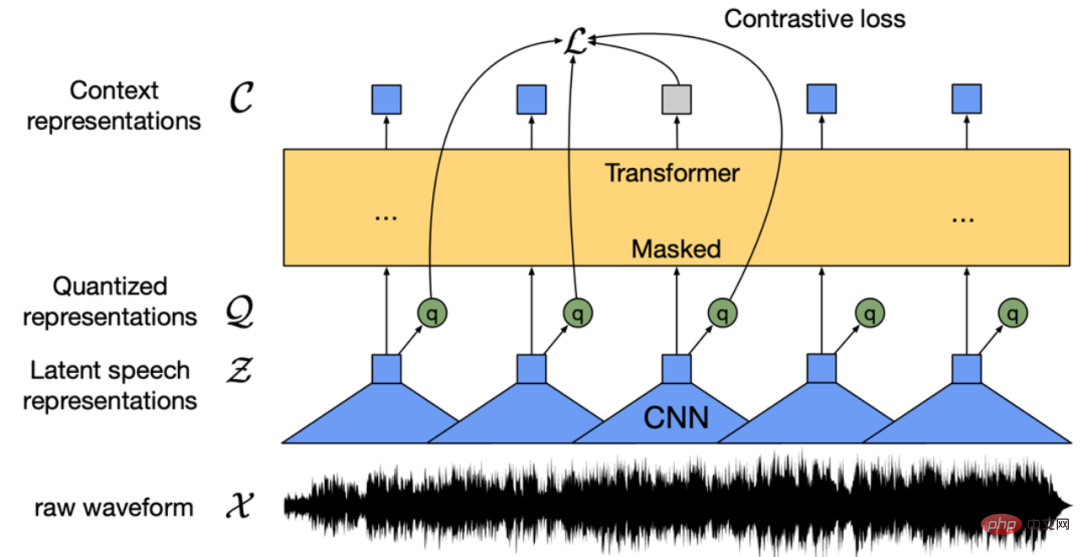 找不到中文语音预训练模型?中文版 Wav2vec 2.0和HuBERT来了Apr 08, 2023 pm 06:21 PM
找不到中文语音预训练模型?中文版 Wav2vec 2.0和HuBERT来了Apr 08, 2023 pm 06:21 PMWav2vec 2.0 [1],HuBERT [2] 和 WavLM [3] 等语音预训练模型,通过在多达上万小时的无标注语音数据(如 Libri-light )上的自监督学习,显著提升了自动语音识别(Automatic Speech Recognition, ASR),语音合成(Text-to-speech, TTS)和语音转换(Voice Conversation,VC)等语音下游任务的性能。然而这些模型都没有公开的中文版本,不便于应用在中文语音研究场景。 WenetSpeech [4] 是
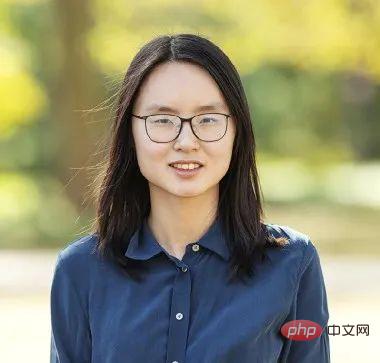 普林斯顿陈丹琦:如何让「大模型」变小Apr 08, 2023 pm 04:01 PM
普林斯顿陈丹琦:如何让「大模型」变小Apr 08, 2023 pm 04:01 PM“Making large models smaller”这是很多语言模型研究人员的学术追求,针对大模型昂贵的环境和训练成本,陈丹琦在智源大会青源学术年会上做了题为“Making large models smaller”的特邀报告。报告中重点提及了基于记忆增强的TRIME算法和基于粗细粒度联合剪枝和逐层蒸馏的CofiPruning算法。前者能够在不改变模型结构的基础上兼顾语言模型困惑度和检索速度方面的优势;而后者可以在保证下游任务准确度的同时实现更快的处理速度,具有更小的模型结构。陈丹琦 普
 解锁CNN和Transformer正确结合方法,字节跳动提出有效的下一代视觉TransformerApr 09, 2023 pm 02:01 PM
解锁CNN和Transformer正确结合方法,字节跳动提出有效的下一代视觉TransformerApr 09, 2023 pm 02:01 PM由于复杂的注意力机制和模型设计,大多数现有的视觉 Transformer(ViT)在现实的工业部署场景中不能像卷积神经网络(CNN)那样高效地执行。这就带来了一个问题:视觉神经网络能否像 CNN 一样快速推断并像 ViT 一样强大?近期一些工作试图设计 CNN-Transformer 混合架构来解决这个问题,但这些工作的整体性能远不能令人满意。基于此,来自字节跳动的研究者提出了一种能在现实工业场景中有效部署的下一代视觉 Transformer——Next-ViT。从延迟 / 准确性权衡的角度看,
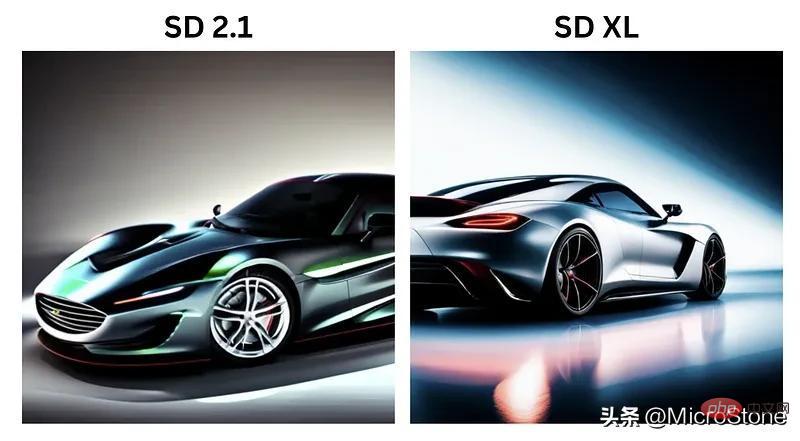 Stable Diffusion XL 现已推出—有什么新功能,你知道吗?Apr 07, 2023 pm 11:21 PM
Stable Diffusion XL 现已推出—有什么新功能,你知道吗?Apr 07, 2023 pm 11:21 PM3月27号,Stability AI的创始人兼首席执行官Emad Mostaque在一条推文中宣布,Stable Diffusion XL 现已可用于公开测试。以下是一些事项:“XL”不是这个新的AI模型的官方名称。一旦发布稳定性AI公司的官方公告,名称将会更改。与先前版本相比,图像质量有所提高与先前版本相比,图像生成速度大大加快。示例图像让我们看看新旧AI模型在结果上的差异。Prompt: Luxury sports car with aerodynamic curves, shot in a
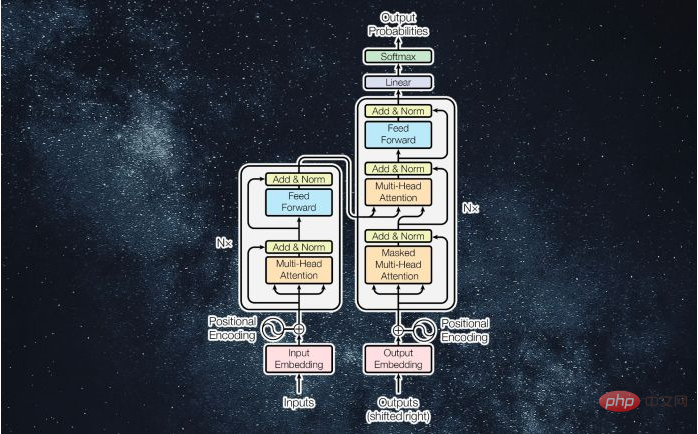 什么是Transformer机器学习模型?Apr 08, 2023 pm 06:31 PM
什么是Transformer机器学习模型?Apr 08, 2023 pm 06:31 PM译者 | 李睿审校 | 孙淑娟近年来, Transformer 机器学习模型已经成为深度学习和深度神经网络技术进步的主要亮点之一。它主要用于自然语言处理中的高级应用。谷歌正在使用它来增强其搜索引擎结果。OpenAI 使用 Transformer 创建了著名的 GPT-2和 GPT-3模型。自从2017年首次亮相以来,Transformer 架构不断发展并扩展到多种不同的变体,从语言任务扩展到其他领域。它们已被用于时间序列预测。它们是 DeepMind 的蛋白质结构预测模型 AlphaFold
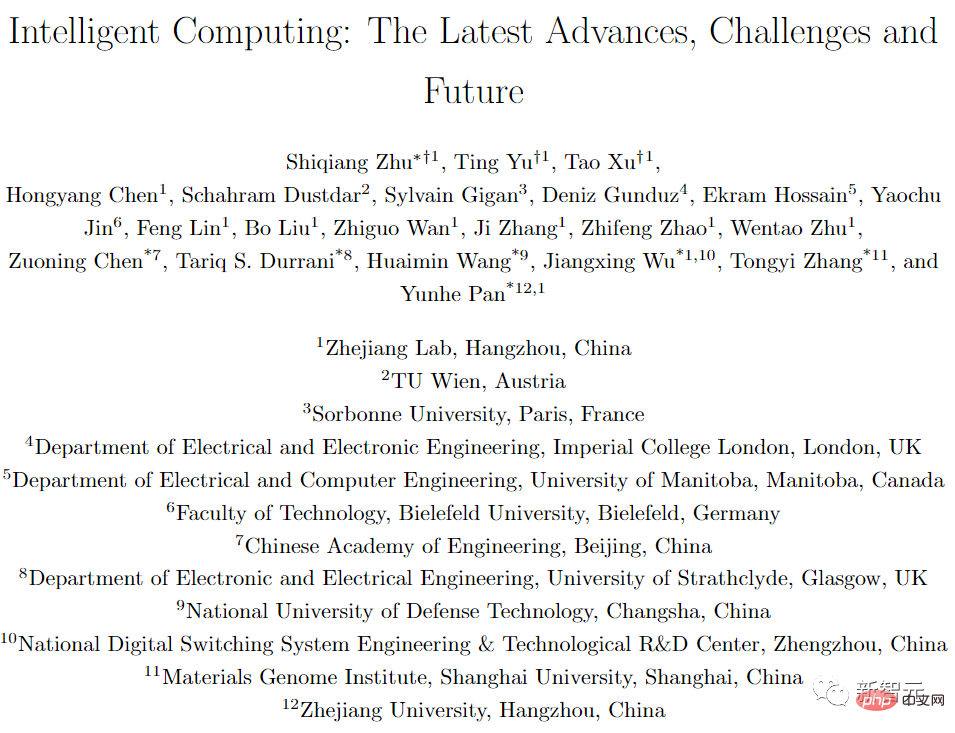 五年后AI所需算力超100万倍!十二家机构联合发表88页长文:「智能计算」是解药Apr 09, 2023 pm 07:01 PM
五年后AI所需算力超100万倍!十二家机构联合发表88页长文:「智能计算」是解药Apr 09, 2023 pm 07:01 PM人工智能就是一个「拼财力」的行业,如果没有高性能计算设备,别说开发基础模型,就连微调模型都做不到。但如果只靠拼硬件,单靠当前计算性能的发展速度,迟早有一天无法满足日益膨胀的需求,所以还需要配套的软件来协调统筹计算能力,这时候就需要用到「智能计算」技术。最近,来自之江实验室、中国工程院、国防科技大学、浙江大学等多达十二个国内外研究机构共同发表了一篇论文,首次对智能计算领域进行了全面的调研,涵盖了理论基础、智能与计算的技术融合、重要应用、挑战和未来前景。论文链接:https://spj.scien
 AI模型告诉你,为啥巴西最可能在今年夺冠!曾精准预测前两届冠军Apr 09, 2023 pm 01:51 PM
AI模型告诉你,为啥巴西最可能在今年夺冠!曾精准预测前两届冠军Apr 09, 2023 pm 01:51 PM说起2010年南非世界杯的最大网红,一定非「章鱼保罗」莫属!这只位于德国海洋生物中心的神奇章鱼,不仅成功预测了德国队全部七场比赛的结果,还顺利地选出了最终的总冠军西班牙队。不幸的是,保罗已经永远地离开了我们,但它的「遗产」却在人们预测足球比赛结果的尝试中持续存在。在艾伦图灵研究所(The Alan Turing Institute),随着2022年卡塔尔世界杯的持续进行,三位研究员Nick Barlow、Jack Roberts和Ryan Chan决定用一种AI算法预测今年的冠军归属。预测模型图


Hot AI Tools

Undresser.AI Undress
AI-powered app for creating realistic nude photos

AI Clothes Remover
Online AI tool for removing clothes from photos.

Undress AI Tool
Undress images for free

Clothoff.io
AI clothes remover

AI Hentai Generator
Generate AI Hentai for free.

Hot Article

Hot Tools

EditPlus Chinese cracked version
Small size, syntax highlighting, does not support code prompt function

ZendStudio 13.5.1 Mac
Powerful PHP integrated development environment

VSCode Windows 64-bit Download
A free and powerful IDE editor launched by Microsoft

SublimeText3 Mac version
God-level code editing software (SublimeText3)

Dreamweaver Mac version
Visual web development tools





